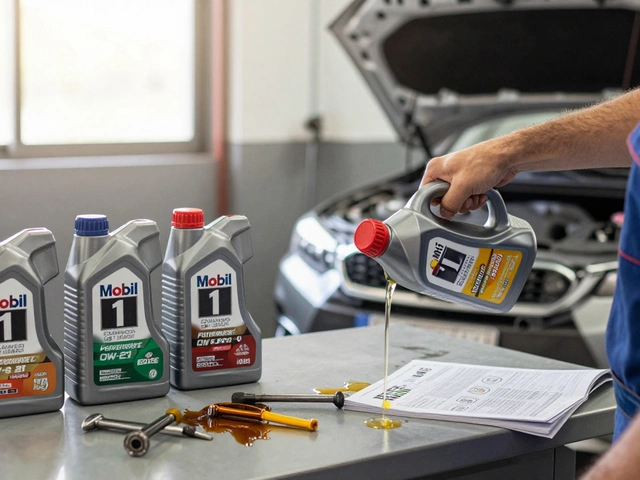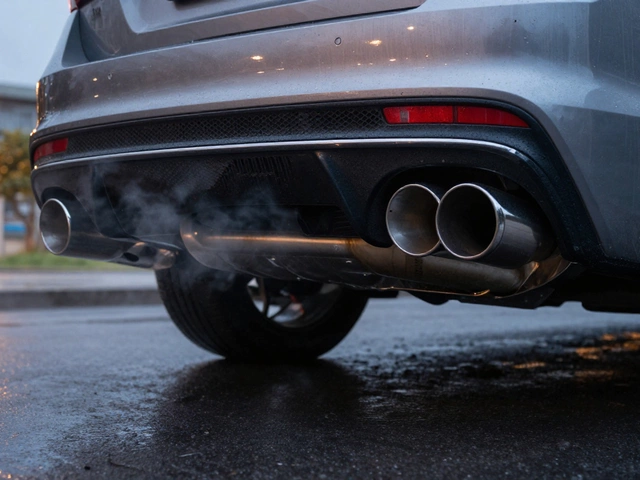Ever had your car sputter out of nowhere or felt like your engine’s lost its edge? Spark plugs could be the sneaky culprit behind all those weird hesitations and rough starts. Forget what you heard about them being just another small part under the hood. These little workhorses get blasted by extreme heat, pressure, and electricity thousands of times a minute—makes you wonder how they last at all. If you drive long enough, sooner or later, you’ll run into spark plug trouble. And when that happens, it’s not just a minor inconvenience—your gas mileage tanks, acceleration lags, and sometimes your car won’t even start. So, what’s wrecking these plugs in the first place?
What Actually Happens to a Bad Spark Plug?
It’s wild how much your engine depends on a healthy spark plug—it’s the only thing igniting that crucial air-fuel mix inside the cylinder. Every time the piston rises, pressure builds, the coil delivers a punch of electricity, and your plug’s center electrode fires off a tiny jolt of lightning. When a plug goes bad, the spark becomes weak or irregular, and that messes with the entire combustion process. Suddenly, parts of the mix burn incompletely and you get a cocktail of symptoms: misfiring, sluggish acceleration, even check engine lights popping up.
If you look at a dead spark plug, you’ll spot a few telltale signs of trouble. The electrode tip might be worn down to a nub, or you’ll see crusty deposits—think ash-like buildup or black, oily gunk. Sometimes the porcelain insulator around the center electrode cracks or turns a dark brown color. If things get really bad, the plug melts or fuses. Here’s the thing: one faulty plug throws off the whole cylinder, shaking up the engine’s rhythm and making the computer compensate in weird ways.
Back in the day, spark plugs needed to be changed every 12,000 to 20,000 miles, but tech has come a long way. Modern plugs made with platinum or iridium can stretch past 100,000 miles if you’re lucky. Double platinum or iridium-tipped plugs aren’t just for show—they actually resist wear and spark erosion better than old-school copper types. But nothing lasts forever. You might get early plug failure if you run cheap gas, ignore oil leaks, or go too long between oil changes. And let’s not forget about extreme engine heat or pre-ignition—little things that crush plug lifespan fast.
For a better sense of what can go wrong, check out this table:
| Spark Plug Problem | Typical Cause | Possible Symptom |
|---|---|---|
| Fouling (Oily) | Oil leak in combustion chamber | Hard starts, misfire |
| Fouling (Carbon) | Rich fuel mixture, short trips | Sooty plugs, poor mileage |
| Gap Wear | Mileage, old plugs | Rough idle, loss of power |
| Overheating | Improper heat range, system issues | White insulator, pinging |
| Cracked Insulator | Poor handling, overtightening | Hard-to-diagnose misfire |
Think your car’s running rough? It might be the simplest thing—a single plug struggling to do its job.
Why Spark Plugs Fail: Surprising and Not-So-Obvious Causes
You’d think all spark plug problems were created equal, but nope. Tons of factors gang up on them. First up, there’s plain old wear and tear. Every spark that jumps across the plug’s gap eats away a bit of metal. All those explosions eventually widen the gap, making the spark weaker—sort of like trying to jump farther and farther till you trip.
Now, let’s talk about cheap or wrong fuel. Low-quality gas (it’s a thing) can leave behind more deposits, clogging up the plug quickly. Modern engines need carefully balanced fuel and air, and if you goof up that balance—say, with bad sensors or a leaky injector—plugs start to foul with carbon. Stop-and-go traffic or repeated short trips won’t let your car burn hot enough to clean off the carbon, so things get dirtier with every drive.
Oil sneaking into the combustion chamber is another classic culprit. If your valve seals or piston rings are tired, even a tiny leak can coat the plug tip with oil. That oily film insulates the electrode, so firing off a strong spark becomes nearly impossible. That’s why old or high-mileage engines chew through plugs faster than newer ones.
Temperature matters too. Engines run hotter than ever, and if your spark plugs don’t match your car’s heat range, they’ll struggle. Too hot? Plugs melt, spark pre-ignites, and you risk engine knock or piston damage. Too cold? Plugs foul with soot. It’s a Goldilocks situation, and it’s easy for DIYers to end up with the wrong part.
One thing drivers often overlook: torque. Overtightening or under-tightening plugs messes with heat transfer and can crack the insulator, leading to hidden misfires. Also, aftermarket mods (like superchargers or engine tuning) ramp up cylinder pressures, which abuse stock spark plugs.
And then there’s the stuff that’s just bad luck: a new plug with a factory defect, animals chewing on ignition wires, or surface corrosion from car storage. It’s a weird mix of science and chaos under your hood.

Quick Tips for Spotting Bad Spark Plugs Early
If you want to avoid the hassle (and cost) that follows a dead spark plug, you’ve got to stay ahead of the symptoms. Pay attention to how the engine starts: does it crank longer than before, stall, or shake at idle? That classic rough idle is usually your engine crying out for help. Listen for pops or backfires, especially if you hear any metallic pinging—both signal things aren’t firing in sync.
Your gas mileage is a canary in the coal mine. If you suddenly notice you’re spending more at the pump but driving the same routes, spark plugs are often on their way out. Also, cars with bad plugs need longer to speed up—a surefire way to earn angry honks on the highway. If your check engine light flickers on, modern cars store diagnostic codes that usually point straight to the guilty cylinder. Auto parts stores will often scan these codes for free.
For visually inclined folks, popping out one of the plugs tells the story fast. Watch for these signs:
- Tan or light gray tip: Normal combustion, plug is healthy.
- Black, dry soot: Running too rich or too many cold starts.
- Oily residue: Oil burning from a leak.
- White blistered tip: Overheating issue or wrong plug.
- Cracks or chips: Mechanical damage or improper installation.
Use the correct spark plug for your engine. Don’t guess or grab just anything off the shelf. Check your manual, go by the engine sticker, or ask the parts counter—wrong plugs are a ticket to early failure.
Keeping Your Spark Plugs Alive: Smart Maintenance Moves
If you don’t want to shell out for more plugs than you need, car makers recommend changing them at intervals based on the type—usually every 30,000 for copper, and up to 100,000 for platinum or iridium. But high mileage and lots of stop-go driving wear them faster. Before a long road trip (or before it gets really cold out), pull at least one plug to check for trouble.
Use quality fuel, and keep your fuel and air filters fresh. These two moves cut deposits dramatically. Make sure your engine’s oil isn’t low or burning—old oil or ignored leaks coat the spark plug, and you’ll get those misfires creeping back. And if you see a check engine light for misfire (like code P0301), don’t ignore it. Replacing just the bad plug sometimes works, but changing the whole set means more even firing and smoother idle.
Another key tip: When installing plugs, use a torque wrench. Set it to your car’s specs (usually measured in inch-pounds, not guesswork). Too tight? Risk of broken insulator. Too loose? Hello, blown-out plug. A dab of anti-seize on the plug threads can help, but only if the plugs don’t come pre-coated—read the package. Snap the coil or wire tightly on top; don’t leave it loose. And never put a cold plug in a hot engine—that’s how cracks and future misfires are born.
For people who love data, here’s a snapshot of spark plug lifespans by material:
| Plug Material | Typical Life (Miles) |
|---|---|
| Copper | 20,000 - 40,000 |
| Platinum | 60,000 - 100,000 |
| Iridium | 80,000 - 120,000 |
If you’re hearing a weird rattle, seeing low miles-per-gallon, or just know it’s been too long, it’s probably time. Swapping out a set of plugs with the right tools takes less than an hour—and in return, your engine will hum smoother, fire stronger, and run cleaner. Sometimes, paying attention to one simple part pays off big for the road ahead.










Write a comment